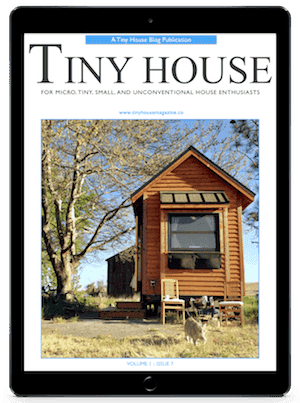During the summer months in Portland, Oregon, air-conditioning was unnecessary. The temperature was typically around 80 degrees Fahrenheit (F) and rarely felt hot. The wool insulation in the tiny house combined with a fan to suck in the cool evening air was all that was required to stay within a tolerable temperature. However, now that the tiny house has moved south to the Central California Valley, the summer heat has been intense. We moved to Red Bluff, CA during the first week of May and quickly experienced high temps above 95 degrees F. In early June, one day exceeded 113 degrees F.
We moved to Red Bluff, CA during the first week of May and quickly experienced high temps above 95 degrees F. In early June, one day exceeded 113 degrees F.
I quickly realized after a few days in our new climate that we needed to adapt. Our tiny house has a wonderful feeling of space with 10 windows, however, a sunny day can rapidly turn this benefit into a green-house effect. Further exacerbating the problem was the tiny house parking spot. In Red Bluff, CA the tiny house is parked directly in the sun and on a black asphalt driveway. To cool the house, I started drawing the window shades after mid morning to reflect sunlight. Also, to reduce solar gain in the loft, I mounted a nylon sun fabric to the outside of our skylight. Although, blocking sunlight and using a fan to circulate the air reduced the interior temp about 10 degrees F, this wasn’t quite enough to get the house down to a comfortable temp.
To meet our immediate need and to save the cats from another day of misery, I purchased a small window air-conditioner with good reviews. The model I purchased was a 5,000 BTU, 500 Watt, Frigidaire unit. Thankfully, this air-conditioner was inexpensive ($118) and easy to install with the provided insulating foam and a few added “L” brackets. The opening for my tiny house window is only about 18” wide but the air-conditioner with insulating foam fit easily. The unit is very stable with the “L” brackets and conserves space by protruding only about 5 inches beyond the exterior siding and less than 1 inch beyond the interior wall.
Initially, I was concerned that the energy consumption with this new appliance would skyrocket. After using the unit nearly constantly for about two months I’m happy to report that our electricity cost merely doubled from about $6/month to $11/month. In comparison, the central air conditioning and attic fan in my mother-in-law’s 2,500 sq ft home costs about $300/month to run. This cost is so prohibitive that my mother-in-law keeps her central air off. We have invited her to come over to the tiny house to cool down periodically. For example, during that 113 degree F day I mentioned earlier, we all hung out in the tiny house and relished the comfortable 70 degree F interior temp.
Killawatt Gage
Oregon Wool Insulation
Article written by Logan Smith
for the Tiny House Magazine Issue 7
Issue 69 is coming out later this week…






HI all,
I love to hear all the progress are making bringing tiny houses to the world. As a semi-retired builder and energy auditor, I am, perhaps hyper-conscious of energy use and waste patterns.
Despite best intentions, I’m sure, the photo of the two guys putting in wall finish shows the absolute worst example of good insulation practices. That wall, despite the investment of time and energy, will have a very low effective R value, probably 2 or 3–really. That wall is like using a colander to carry water.
I implore folks to research effecting thin wall insulation and weatherization practices. MY self, I install polyiso rigid foam with a half inch gap all around which I fill with foam in a can- on a pro gun. maximum R value and inherent infiltration proof.
Cheers, Will
My husband and I are selling our house and moving into our camper going from 1850 sq ft to just about 260 sq ft with 3 cats !! We are in our early 70’s and need to down size. Our daughter and son-in law are gracious for letting us keep the camper on their land and providing us with electricity and water… This will be a new experience for us both so wish us luck… We want to go tiny in the future so if any one has some good ideas please send them my way… Thanks M Kerby
It sounds like you have a good start. I thought you would like to know that downsizing becomes addictive. So in the beginning, you may feel like you are a little cramped with extra stuff, but before long, you will find you have extra room as you continue to downsize. Good luck. I look forward to hearing your progress. If you go on my website and register for my newsletter which provides some good tips, you will get a free copy of my e-book that has lots of tips and saving space solutions.